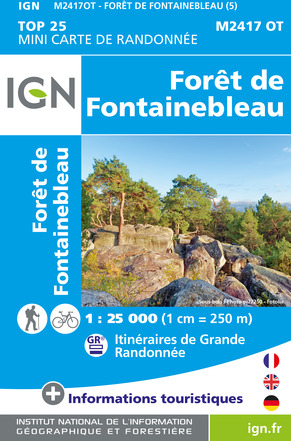Alert
Alerts
Rock art discovery trail




IGN cards














Description
This walk allows the discovery of a littleknown archeological heritage in the forest of Fontainebleau, yet ancient and precious: rock engravings.
The sands: they are among the finest and purest worldwide, with a silica content above 97%. They were deposited about 30 million years ago. Today’s Fontainebleau region was located on the shore of a vast shallow marine gulf
around which 30 to 60 meters of coastal sands accumulated. Much later in the Quaternary era, these sands were cemented, giving birth to sandstone plateaus called “platières” which then fractured, thus creating the famous boulders of the forest.
Rock engravings: between Fontainebleau and Rambouillet, more than 2000 shelters with engravings have been counted. They can be dated from the lower paleolithic (35 000 to 9 500 BC) up to World War II. The trail is dedicated to the explanation of these artefacts and their fragility. In order to preserve them for future generations, it is important not to rub, walk upon, re-engrave, or colorize them. Reproductions are available in the Prehistory Museum in Nemours.
Technical Information
Altimetric profile
Starting point
Points of interest
Additional information
Updated by
Office de tourisme du Pays de Fontainebleau - 24/06/2024
www.fontainebleau-tourisme.com/
Report a problem
Environments
Forest location
Open period
All year round.
Contact
Phone : 01 60 74 99 99
Email : info@fontainebleau-tourisme.com
Website : www.fontainebleau-tourisme.com/
Topo guides and map references
Map references :
Walking and cycling guide available from the Tourist Office or on the 1/16,000-scale IGN map of the Forêt de Fontainebleau.
Reception complements
Best practices in the forest:
• No waste in the forest
• Do not light fires in the forest
• Do not disturb wild fauna
• Bivouac only in authorized areas
• Share space together
• Do not climb on piles of wood
• Moderate picking
• Stay on trails
• Leave dead wood on the ground
• Dogs on leash in spring
• Hunting ground, do not enter
• Watch out for ticks
Data author









